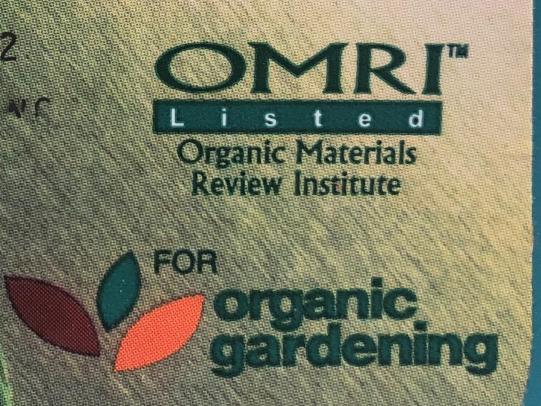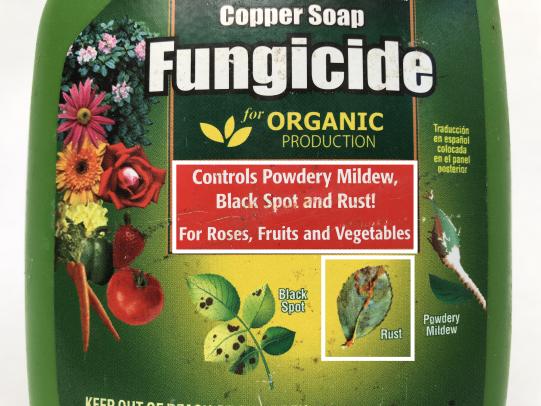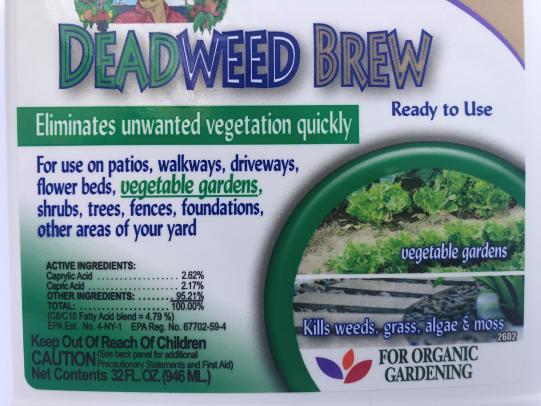UNDERSTANDING ORGANIC PESTICIDE LABELS
- The photo shows lettuce, beans, and other vegetables. Many people want to grow their produce without pesticides.
- It is vital to understand that “organic” does not mean pesticide-free.
- The term organic describes pesticide products derived from natural materials.
What are pesticides?
Pesticides are products designed to kill rodents, weeds, mosses, insects, plant diseases, slugs, and snails. Household disinfectants such as bleach and ammonia are considered pesticides. Flea-killer products are too.
What are organic pesticides?
- Organic pesticides are derived from naturally occurring materials from plant, animal, and mineral sources.
- No matter how natural, all pesticides should be used with care.
Some example organic pesticide ingredients include:
- Plant material such as pyrethrins derived from chrysanthemum and oil from neem trees
- Living organisms including Bacillus thuringiensis (Bt) (bacteria) and Beauvaria bassiana (fungus)
- Mined minerals such as sulfur and copper
Jump To
- Organic Standards for Gardens & Landscapes
- Organic Pesticides Still Have Risks
- Organic Pesticide Ingredients
FOR QUESTIONS ABOUT PESTICIDES
The National Pesticide Information Center (NPIC) can answer questions about pest control chemicals.
1-800-858-7378 or npic@ace.orst.edu

Rawpixel, iStock
Our Top Tip
ORGANIC CERTIFICATION FOR FARM BUSINESSES
If you’re thinking about going organic for a farm business, learn about the organic certification process (US Department of Agriculture). To use the word “organic” to describe your produce, you have to be certified.
For farm businesses
- Certified organic farms have to follow rules about which pesticides and fertilizers are allowed as specified by their accredited certifying agent.
For school and community gardens
- Schools and community gardens often have rules in place about using organic pesticides. Follow the guidance from the site manager in these situations.
For gardens and landscapes on private property
- For gardens and landscapes on private property, there are no standards regarding the use of approved organic pesticides other than following the label directions.
To find organic pesticide products
- Pesticide product labels may display a particular logo to indicate they meet the criteria for use in organic production.
- Look for logos on pesticide products by Organic Materials Review Institute (OMRI) or the US Department of Agriculture. Look for phrases such as “For organic gardening.”
- No matter how natural, all pesticides should be used with care.
- Always follow the label instructions, and take steps to minimize exposure to people, animals, and the environment.
- Plant oils such as citrus oil and mint oil can be harmful to the eyes. People may be allergic to them.
- Metallic substances like zinc and sulfur can contaminate surface water. They could damage your equipment if not used properly.
- Your risk depends on the toxicity of the substance and the amount of exposure.
Example Organic Herbicide Active Ingredients
Look for “Active Ingredients” on the product label. Here are some example ingredients:
- Caprylic acid & capric acid (shown in photo)
- Acetic acid
- Ammoniated soap of fatty acids (herbicidal soap)
- Iron HEDTA
- Citric acid
- Clove oil
you still need to read the label for organic pesticides
Read pesticide labels & follow the instructions
- It has instructions to protect you and the environment.
- Labels are different for every product and they often change over time.
- Use a magnifying glass.
- Pay attention to CAUTION, WARNING, and DANGER statements.
- Pay attention to the PRECAUTIONARY STATEMENTS.
- The law requires you to read and follow insecticide directions.
Protect yourself
Eye, skin & lung irritants
- Wear the right protective gear. This often includes chemical-resistant gloves, safety glasses, a long-sleeve shirt, pants, socks, and shoes.
- Mix outdoors or in a well-ventilated area.
- Wash hands after mixing or applying and before eating or smoking.
- Take a shower immediately after handling herbicides.
- Wash clothes worn while mixing or applying separately from other laundry.
Natural pesticides (such as sulfur and Bacillus thuringiensis (Bt)) may be used in organic settings, but not all of them. For example, nicotine and strychnine are natural materials. However, they are not included in organic standards.
Insect killers (Insecticides)
- For insects, many organic products are available. Ingredients include plant oils (clove, garlic, peppermint, neem, etc.), mineral oils, soap salts, and biological pesticides that come from plants (pyrethrins) and bacteria (spinosad).
Pesticides for plant diseases (Fungicides)
- Sulfur is the most common organic fungicide. It can be sprayed and sprinkled, but it cannot be burned legally in the United States.
- Organic fungicides are also available. Active ingredients include sulfur, plant oils, soap salts, mineral oils, and microorganisms (such as Bacillus subtilis and Streptomyces lydicus).
- Some copper-based fungicides are allowed in organic standards. Copper is a heavy metal. Avoid contact with eyes and skin. Don’t use copper-based fungicides repeatedly in an area. The copper can build up in the soil to harmful levels.
Poison baits for rodents (Rodenticides)
- For rodents, exclusion and habitat modification are most often used. Organic rodenticides that contain cholecalciferol (Vitamin D3) are available in Oregon.
- The EPA recently registered dry ice that emits carbon dioxide for rodent control in burrows. However, it has not been evaluated for organic production at this time.
Poison bait for slugs & snails (Molluscicides)
- For slugs and snails, organic producers have access to iron phosphate and sodium chloride. Beer is not OMRI-listed. Copper strips may also be used around raised beds/barrels.
Weed killers (Herbicides)
- For weeds, cultivation and mulch are most often used for organic gardens. Organic herbicide products are available. Ingredients include plant oils, salt, soap salts, and several acids. These products are useful to kill young annual weeds. However, they should be applied multiple times to kill perennial plants such as dandelion or blackberry.
- Registered organic products in Oregon contain acetic acid for weed control. Acetic acid is also known as vinegar. Both require the user to wear safety goggles according to label directions.
Content provided by Kaci Buhl and Weston Miller.
Peer reviewed by OSU Department of Horticulture.
Organic Pesticide References
Organic and Conventionally Grown Food
National Pesticide Information Center
Natural and Biological Pesticides
National Pesticide Information Center
Organic Pesticide Ingredients
National Pesticide Information Center




